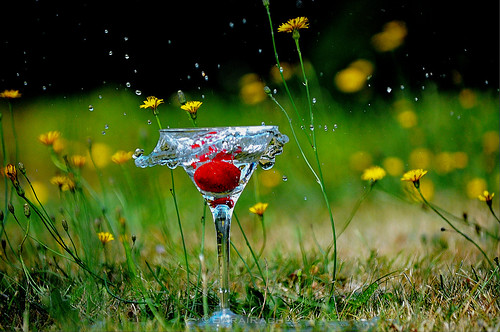Although most people think that taking a picture is just as simple as pointing and shooting, there really is an art form to it. Typically, your photos never look quite as good as you imagined they would. However, once you learn the proper techniques, it really is simple to take great pictures.
Keep your trigger finger ready at all times. Taking longer to snap a photo increases the odds that something will move, change or in other ways ruin your perfect photo op. The faster the shutter on your camera, the better.
Digital photography can be altered and manipulated in software to make them resemble traditional art forms. Lots of companies create digital software for changing your pictures; however, Adobe Photoshop is usually considered by most to be the standard in the industry. Often, turning a photo into a work of art is easy; simply apply a filter in the medium of your choice.
Make sure that your arms remain next to your body when you hold a camera, and make sure that the sides and the bottom of the camera are supported. By holding your camera in this way, you’ll lessen the chance of moving the camera during the shot; thereby keeping it framed and steady for the best shot. Putting your hands beneath the lens and camera, instead of having them on top, prevents you from dropping your camera accidentally.
This is a tip you can use in photography. You should take the time to educate yourself on shutter speed. These shutter speeds are indicated by the letters P, A, S and M. P means your program mode. This is the fully automatic setting of your camera, and it sets the aperture and shutter speed automatically for you. If you don’t know what you’re shooting, use your “P” setting.
Do not allow your camera batteries to run low because you never know when a photo opportunity will occur. Digital cameras use up a large amount of power, particularly when you’re using an LCD screen. Therefore, you should ensure your batteries are always completely charged prior to using the camera. Another option is to keep a few fresh batteries in your camera’s carrying case so you never miss anything.
Use people as the subjects for your photos. Of course, it is recommended to request permission first before snapping pictures. When traveling, looking at these pictures will remind you of particular memories, even if the people you photographed do not look like they would stand out from a crowd at the moment when you take your picture. Try to get laid back clothing and a candid facial expression.
Be sure to find a subject who is interesting and compelling. If you don’t have the perfect subject, then the quality of your equipment, or the amount of your composure skills won’t amount to much. Carefully choose objects that inspire you, or find a model who will pose for you.
Allow your camera to automatically focus on the subject, then move slightly in such a way that the subject is no longer in the center of the frame. Most people expect the subject to be in the center of the frame; varying it up a bit can add visual interest. You may create more interest by focusing on what wouldn’t normally be considered the subject in your photograph.
Pictures you’ve taken previously may have been all blurred and off-color. When you follow the advice in the article above, you will never again be disappointed with your photos. With the ideas presented here, you can take breathtaking shots that you want to hang on the wall for everyone to admire.




